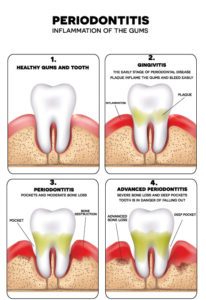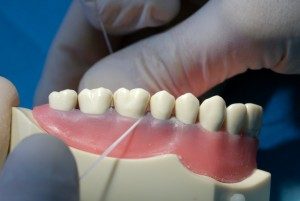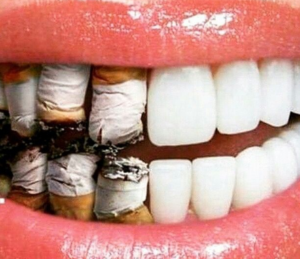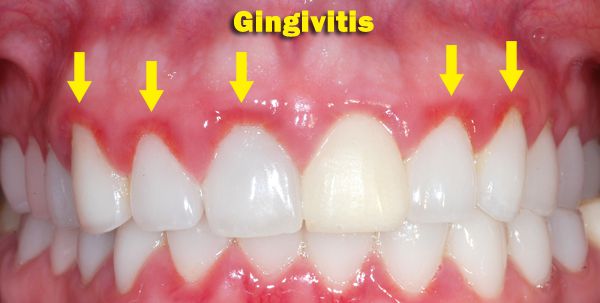Spitting a bit of blood in the sink after brushing and flossing may not seem like a big deal, and in fact you may not even notice it anymore. But the truth is that bleeding gums are never something to ignore. More often than not, bleeding gums are an early sign of gum disease which should be addressed immediately.
There are a few different things that can cause an onset of bleeding gums, read on to find out what they are and what you can do about them to get your oral health back on track.
Inadequate oral hygiene
The most common reason for red, swollen, puffy, or bleeding gums is inadequate oral hygiene. This means that the basic routine of brushing and flossing twice each and every day is not being done. It takes very little time for plaque and tartar to build up on teeth and along the gumline, in fact almost immediately after brushing it begins to rebuild. This buildup of plaque is what irritates gums when left uncleaned for too long, which can be within as little as 24 hours.

→ What to do about it
Regular professional cleanings from your dentist are essential even if your oral hygiene techniques are good. Professional cleanings offer a deep clean and can eradicate plaque and difficult tartar that you can’t reach . Contact your local dentist to book an appointment for your dental cleaning session.
To remedy inadequate oral hygiene, be sure to update your cleansing routine so that your teeth, gums, and other oral tissues are properly brushed in the morning and in the evening, being sure to also floss at least once every day.

Your diet
Fruits, vegetables, dairy products, and foods high in vitamin C are essential building blocks of a diet that keeps your mouth happy. Sugars from sweet foods and carbohydrates stick tenaciously to teeth and along the gumline and, if not removed soon after consumption, start to eat away at teeth and gum tissues.
→ What to do about it
Crunchy vegetables, however, are great for your oral health as they scrape against teeth and dislodge destructive food and bacteria while being very low in sugar. Dairy products such as cheese contribute to healthy teeth and gums as well and, for swollen gums, foods with anti-inflammatory properties such as fish oil are great to add to your diet. For advice specific to your diet, speak to your dentist about which foods you could add to or remove from your diet to help make managing your oral health easier.
If You’re pregnant
Unfortunately nearly half of all women will experience gingivitis during pregnancy, by their second trimester, which can lead to gum disease. Pregnancy hormones make mothers-to-be much more vulnerable to gum disease even if they brush and floss twice each day as the gum tissues are in general more irritable and less able to fight off infection.

→ What to do about it
Visiting your dentist as soon as you know that you are pregnant is essential so that you can get professional advice tailored to you and set up regular appointments for cleanings and checkups throughout your pregnancy. Brushing and flossing at least twice every day is the most important thing to do to keep your oral hygiene in check.
If you’re a smoker
The toxins found in cigarettes are extremely destructive and weaken the gum tissues which can cause discolouration, swelling, and bleeding in gums.

إ
→ What to do about it
Quitting smoking is the only way to completely rid yourself of cigarette toxins and allow your gum tissues to rebuild and become healthy again. In addition to this, brushing and flossing twice daily is important to keep harmful bacteria from attacking weakened gum tissues.
In Conclusion
It’s important to keep in mind that gum disease is not the end of your oral health. Most of the time it can be reversed and, with proper oral hygiene and dental professional care, can be eradicated. Call your dentist today to set up an appointment to discuss your oral health concerns and to have a check up.



